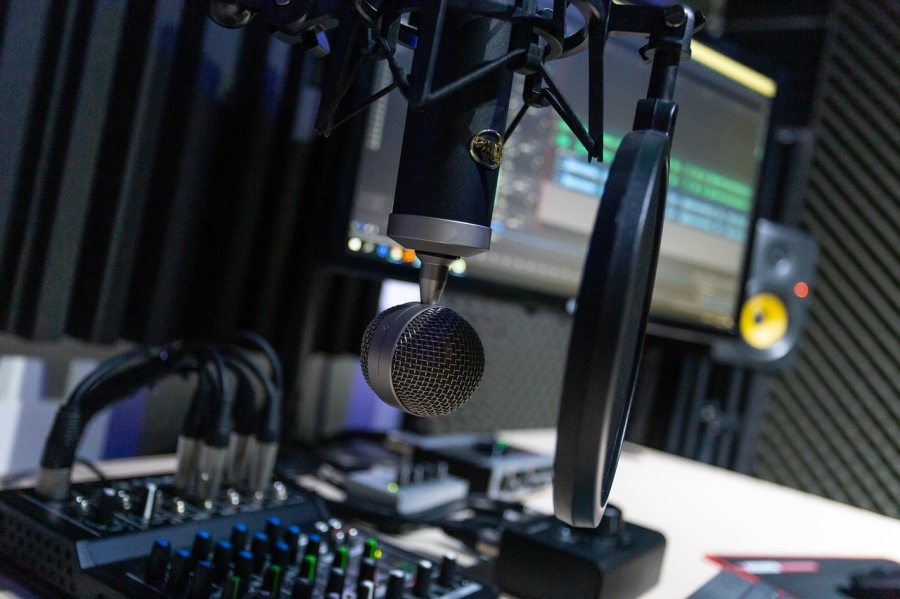- Afghanistan
- Åland Islands
- Albania
- Algeria
- American Samoa
- Andorra
- Angola
- Anguilla
- Antarctica
- Antigua and Barbuda
- Argentina
- Armenia
- Aruba
- Australia
- Austria
- Azerbaijan
- Bahamas
- Bahrain
- Bangladesh
- Barbados
- Belarus
- Belgium
- Belize
- Benin
- Bermuda
- Bhutan
- Bolivia
- Bonaire, Sint Eustatius, and Saba
- Bosnia and Herzegovina
- Botswana
- Bouvet Island
- Brazil
- British Indian Ocean Territory
- British Virgin Islands
- Brunei
- Bulgaria
- Burkina Faso
- Burundi
- Cambodia
- Cameroon
- Canada
- Cape Verde
- Cayman Islands
- Central African Republic
- Chad
- Chile
- China
- Christmas Island
- Cocos [Keeling] Islands
- Colombia
- Comoros
- Cook Islands
- Costa Rica
- Croatia
- Cuba
- Curaçao
- Cyprus
- Czech Republic
- Congo - Kinshasa
- Denmark
- Djibouti
- Dominica
- Dominican Republic
- Timor-Leste
- Ecuador
- Egypt
- El Salvador
- Equatorial Guinea
- Eritrea
- Estonia
- Ethiopia
- Falkland Islands
- Faroe Islands
- Fiji
- Finland
- France
- French Guiana
- French Polynesia
- French Southern Territories
- Gabon
- Gambia
- Georgia
- Germany
- Ghana
- Gibraltar
- Greece
- Greenland
- Grenada
- Guadeloupe
- Guam
- Guatemala
- Guernsey
- Guinea
- Guinea-Bissau
- Guyana
- Haiti
- Heard Island and McDonald Islands
- Honduras
- Hong Kong SAR China
- Hungary
- Iceland
- India
- Indonesia
- Iran
- Iraq
- Ireland
- Isle of Man
- Israel
- Italy
- Côte d’Ivoire
- Jamaica
- Japan
- Jersey
- Jordan
- Kazakhstan
- Kenya
- Kiribati
- Kosovo
- Kuwait
- Kyrgyzstan
- Laos
- Latvia
- Lebanon
- Lesotho
- Liberia
- Libya
- Liechtenstein
- Lithuania
- Luxembourg
- Macau SAR China
- Macedonia
- Madagascar
- Malawi
- Malaysia
- Maldives
- Mali
- Malta
- Marshall Islands
- Martinique
- Mauritania
- Mauritius
- Mayotte
- Mexico
- Micronesia
- Moldova
- Monaco
- Mongolia
- Montenegro
- Montserrat
- Morocco
- Mozambique
- Myanmar [Burma]
- Namibia
- Nauru
- Nepal
- Netherlands
- Netherlands Antilles
- New Caledonia
- New Zealand
- Nicaragua
- Niger
- Nigeria
- Niue
- Norfolk Island
- North Korea
- Northern Mariana Islands
- Norway
- Oman
- Pakistan
- Palau
- Palestinian Territories
- Panama
- Papua New Guinea
- Paraguay
- Peru
- Philippines
- Pitcairn Islands
- Poland
- Portugal
- Puerto Rico
- Qatar
- Congo - Brazzaville
- Réunion
- Romania
- Russia
- Rwanda
- Saint Barthélemy
- Saint Helena
- Saint Kitts and Nevis
- Saint Lucia
- Saint Martin
- Saint Pierre and Miquelon
- Saint Vincent and the Grenadines
- Samoa
- San Marino
- São Tomé and Príncipe
- Saudi Arabia
- Senegal
- Serbia
- Serbia and Montenegro
- Seychelles
- Sierra Leone
- Singapore
- Sint Maarten
- Slovakia
- Slovenia
- Solomon Islands
- Somalia
- South Africa
- South Georgia and the South Sandwich Islands
- South Korea
- South Sudan
- Spain
- Sri Lanka
- Sudan
- Suriname
- Svalbard and Jan Mayen
- Swaziland
- Sweden
- Switzerland
- Syria
- Taiwan
- Tajikistan
- Tanzania
- Thailand
- Togo
- Tokelau
- Tonga
- Trinidad and Tobago
- Tunisia
- Turkey
- Turkmenistan
- Turks and Caicos Islands
- Tuvalu
- U.S. Virgin Islands
- Uganda
- Ukraine
- United Arab Emirates
- United Kingdom
- United States
- U.S. Minor Outlying Islands
- Uruguay
- Uzbekistan
- Vanuatu
- Vatican City
- Venezuela
- Vietnam
- Wallis and Futuna
- Western Sahara
- Yemen
- Zambia
- Zimbabwe
What Is Dance? An Overview

What Is Dance? An Overview
The Ultimate Guide to Dancing: A Career in the Performing Arts
Dancing is not just an art form—it's a passion, a way of expressing emotion, culture, and creativity. Whether you're dancing for fun, seeking to build a career, or aiming for professional recognition, the dance industry offers diverse opportunities for all types of dancers. This comprehensive guide will explore the different types of dance, career opportunities, how to get started, and how to succeed in the dance world. Whether you're into ballet, contemporary, hip hop, or any other dance style, this article will help you take the first steps in your dance journey.
What Is Dance? An Overview
Dance is an art form that involves rhythmic movement of the body, usually to music. It has been around for centuries and exists in every culture worldwide. People dance to express feelings, tell stories, or entertain. Over time, dance has evolved into various styles, from classical ballet to street dance and everything in between.
Dancing offers multiple career paths, including performance, choreography, teaching, and working in related fields like dance therapy or production. The demand for skilled dancers spans across many industries, including theater, television, film, music videos, commercials, and live performances.
Types of Dance: Exploring Different Categories
Dance is as diverse as the cultures and people who practice it. There are various categories within the dance world, each with its unique style, technique, and purpose. Here are some of the most prominent dance styles:
1. Ballet
Ballet is one of the most classical and disciplined forms of dance, originating in the courts of Renaissance Italy and later flourishing in France and Russia. Known for its structured movements, strong technique, and use of pointe shoes, ballet requires immense strength, flexibility, and control. There are several types of ballet, including:
- Classical Ballet: The most traditional form of ballet, performed in strict adherence to the classical technique.
- Contemporary Ballet: A more modern and flexible interpretation of ballet, blending elements of modern dance with classical principles.
- Neoclassical Ballet: A style that bridges the gap between classical ballet and contemporary ballet.
2. Contemporary Dance
Contemporary dance is a genre that incorporates a wide variety of dance styles and techniques, including modern, jazz, and ballet. It emerged in the mid-20th century as a reaction to classical ballet. Contemporary dance emphasizes flexibility, creativity, and freedom of expression. Dancers often experiment with improvisation and use the body’s natural movements to express emotions and ideas.
3. Hip Hop Dance
Hip hop dance originated in the streets and is heavily influenced by urban culture. It includes a range of styles, such as breakdancing, popping, locking, and krumping. Hip hop dance is energetic, grounded, and filled with powerful movements. It is often seen in music videos, competitions, and live performances.
- Breakdancing: Known for its acrobatic moves and ground spins, breakdancing is one of the most iconic elements of hip hop culture.
- Locking and Popping: These are styles that involve sudden, sharp movements and quick changes in direction to the beat of the music.
4. Jazz Dance
Jazz dance is a lively and upbeat style that blends elements of ballet, modern, and African dance. It is often performed to jazz music, though it has since evolved to include a wide range of musical genres. Jazz dance emphasizes rhythm, improvisation, and individual expression. Some subgenres of jazz include:
- Theatrical Jazz: Often performed on stage in musicals and plays, theatrical jazz includes elements of storytelling through dance.
- Street Jazz: A more commercial form of jazz that’s often seen in music videos and on television.
5. Tap Dance
Tap dance is characterized by the rhythmic sound made by tapping the feet, often with metal taps attached to the shoes. It’s known for its intricate footwork and percussive rhythms. Tap dancers create musical patterns with their feet, making it one of the most musical forms of dance.
6. Latin Dance
Latin dance includes various styles that are often performed in pairs or groups, typically associated with Latin American music. Popular forms include:
- Salsa: A lively, passionate dance with roots in Afro-Cuban rhythms and Latin music.
- Cha-Cha: A fast-paced dance characterized by sharp, quick steps and playful movements.
- Tango: Originating from Argentina, tango is a dramatic and intimate dance style.
7. Ballroom Dance
Ballroom dance refers to a collection of partner dances performed in a formal setting, often in competitions or social events. This category includes:
- Waltz: A smooth, flowing dance with a three-beat rhythm.
- Foxtrot: Known for its slow and fast steps, this dance is elegant and smooth.
- Rumba: A sensual dance with slow movements and rhythmic steps.
8. Cultural Dance
Cultural dance refers to traditional dances from specific cultures or regions. These dances are often linked to rituals, celebrations, and community gatherings. Examples include:
- Flamenco: A passionate Spanish dance that incorporates intricate footwork, clapping, and guitar music.
- Irish Dance: Known for its fast footwork and rigid upper body, this dance is often seen in competitions and performances.
- African Dance: Emphasizes rhythmic movement, often with a focus on storytelling and community.
9. Dance Theater
Dance theater combines elements of dance and theater, where dance is used to tell a story or express an emotion. This type of dance is often experimental and may involve spoken word or dramatic interpretation alongside the choreography.
How to Start a Dance Career
Breaking into the world of dance can be challenging, but with the right approach, anyone can build a successful career. Here are some essential steps to get started in dance:
1. Start Training Early
Most professional dancers begin training at a young age. If you want to pursue a career in dance, it’s essential to start training in the style of your choice. Look for local dance studios that offer beginner classes. Ballet schools, modern dance academies, and hip hop studios are all great places to get started.
2. Build Your Skills and Technique
Dance is all about technique. Even if you have natural talent, it's important to work on building your skills through consistent practice. Take regular classes, attend workshops, and watch performances to continually improve your dancing technique.
3. Find a Dance Agency or Manager
Just like other performance industries, dancers can benefit from having a manager or agent. A reputable agency can help you secure auditions, negotiate contracts, and provide career advice. It's important to research agencies carefully to avoid scams.
4. Create a Professional Dance Portfolio
A professional portfolio is essential for showcasing your skills and experience as a dancer. Your portfolio should include high-quality photos and videos of your performances. You may also want to include a resume outlining your dance education, previous performances, and any special training you’ve received.
5. Attend Auditions and Performances
Attending auditions is key to getting noticed in the dance industry. Many dance jobs, such as performances in musicals, music videos, and theater productions, require auditions. Additionally, keep an eye out for performance opportunities at local theaters, festivals, or community events.
6. Network with Industry Professionals
Building relationships with other dancers, choreographers, directors, and producers is important for career growth. Attend industry events, workshops, and festivals to meet professionals in the dance world. Networking can lead to potential job offers and collaborations.
Tips for Success in the Dance Industry
- Stay Consistent: Regular practice and continued education are key to improving your skills.
- Maintain a Healthy Lifestyle: Stay in shape and care for your body through proper nutrition and rest.
- Embrace Diversity: The dance industry values unique and diverse performers. Don’t be afraid to stand out!
- Be Resilient: Rejection is a part of the process in the dance world. Stay positive and keep working hard.
Conclusion: Start Your Dance Career Today
Dancing is an exciting and dynamic career that offers endless possibilities for personal expression and professional achievement. Whether you're looking to perform on stage, teach dance, or choreograph for television, there are numerous paths you can take in the dance world. By following the steps outlined in this guide and staying committed to your passion, you can turn your love for dance into a successful career.
For more career advice, training programs, or to explore job opportunities in the performing arts, visit MusicalArts.com and Jobs.MusicalArts.com.

 by My Jobs Centre
by My Jobs Centre




